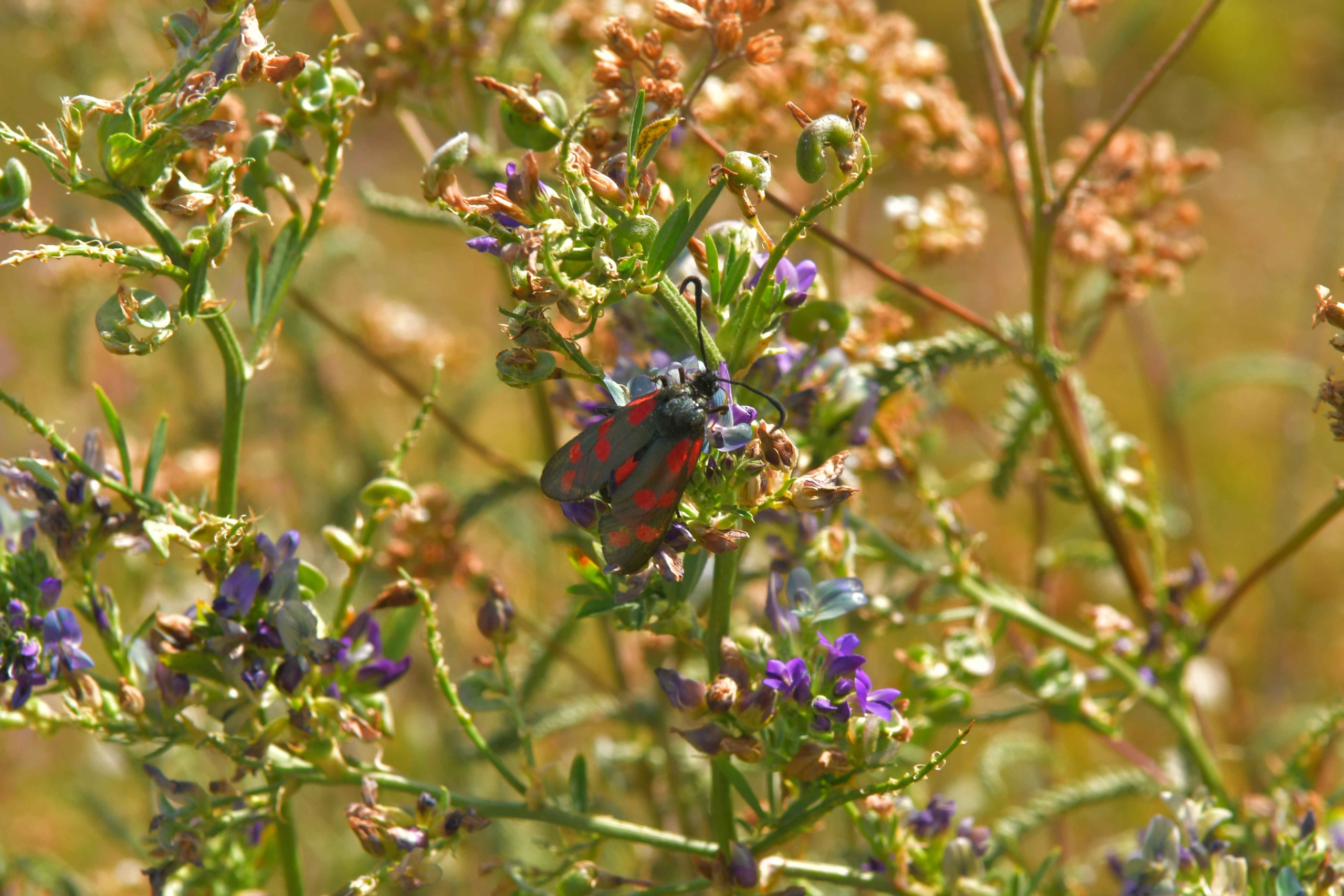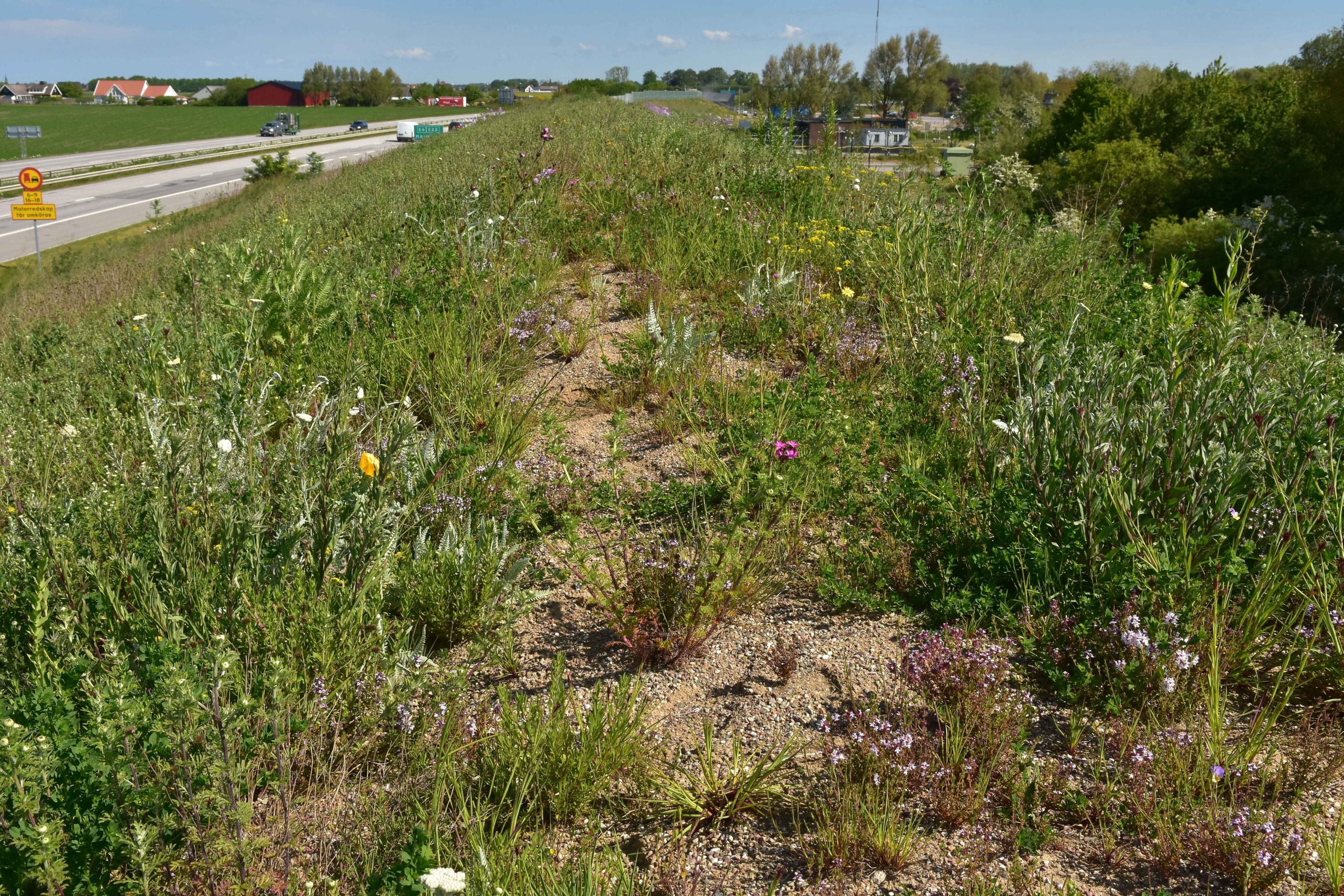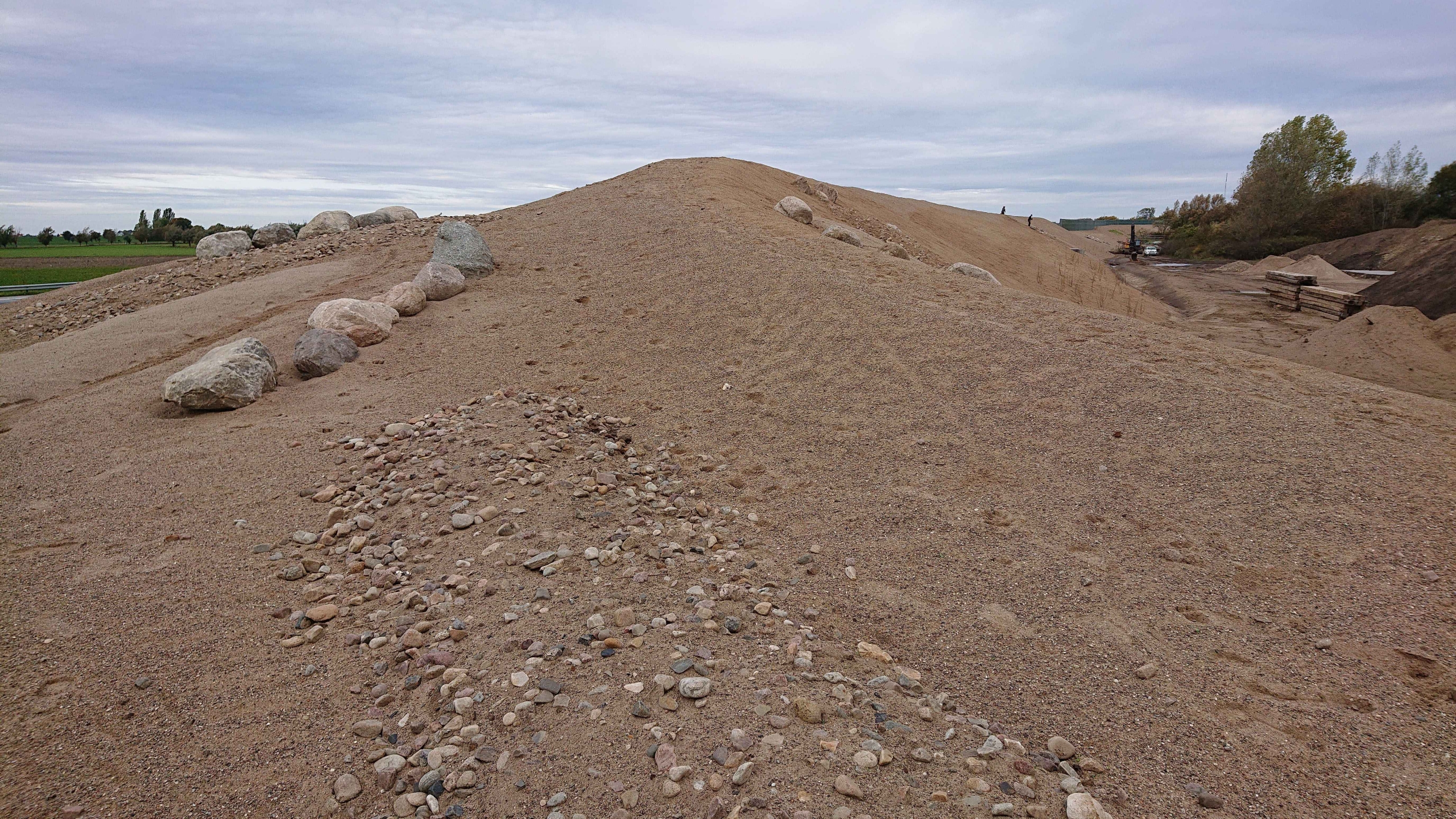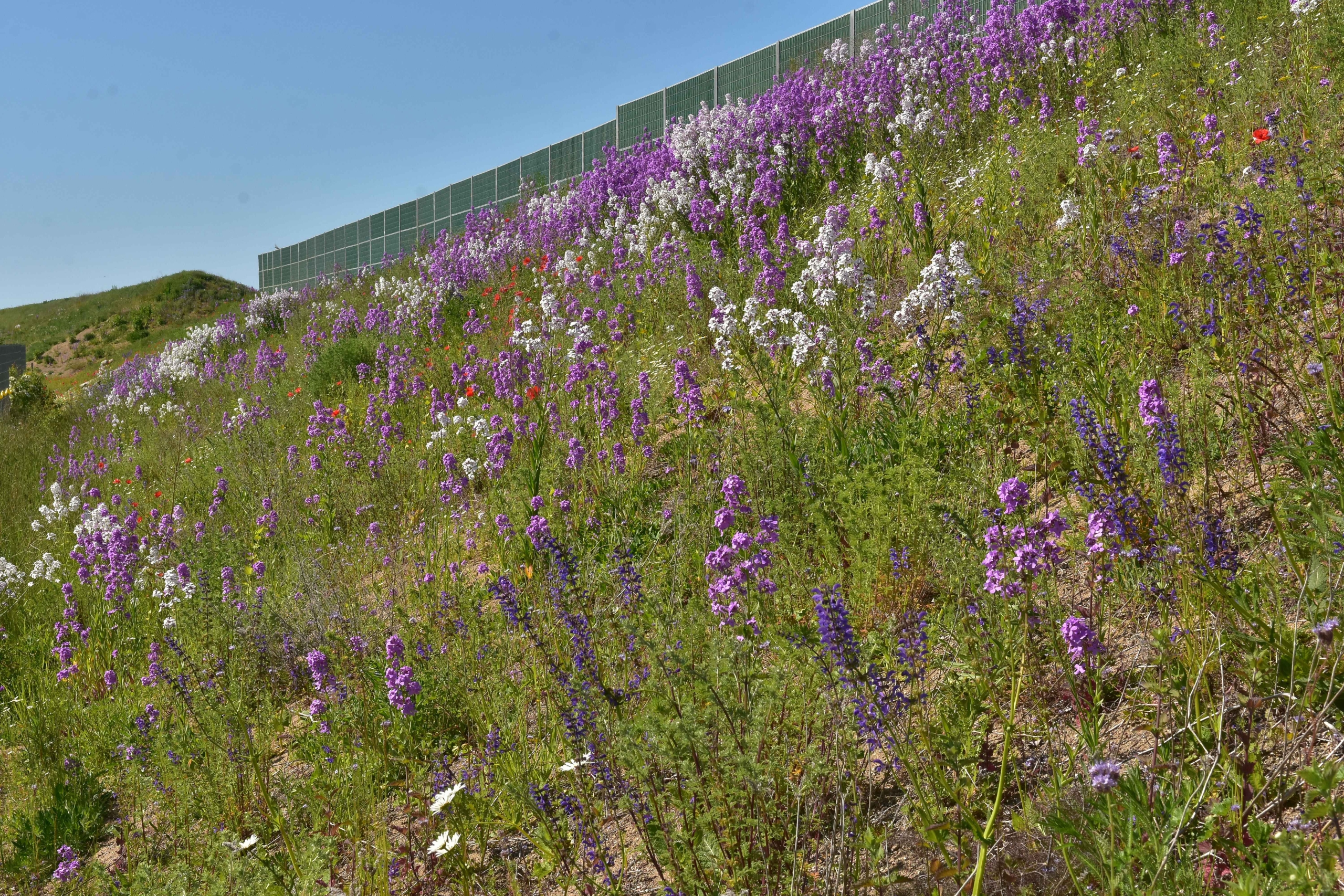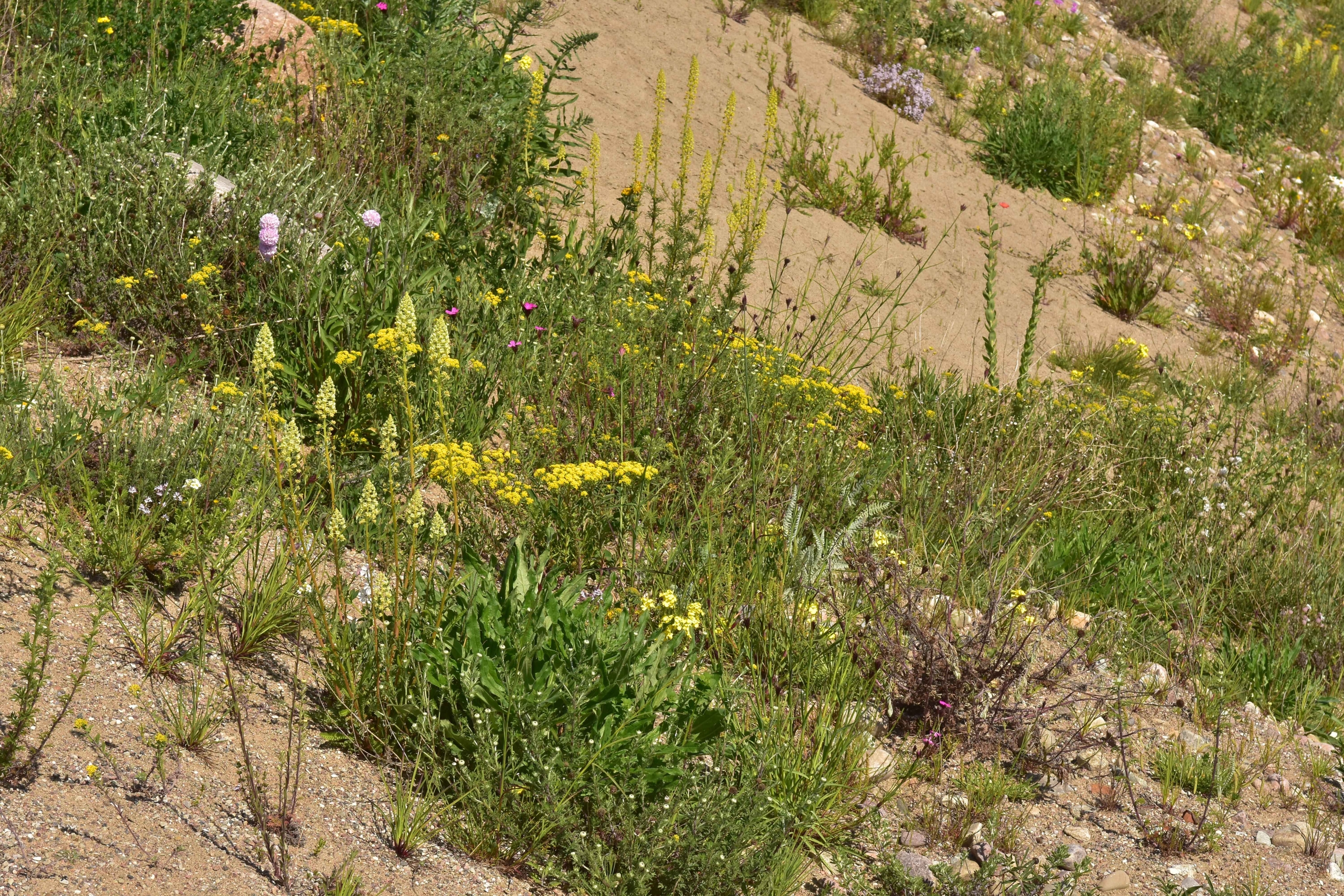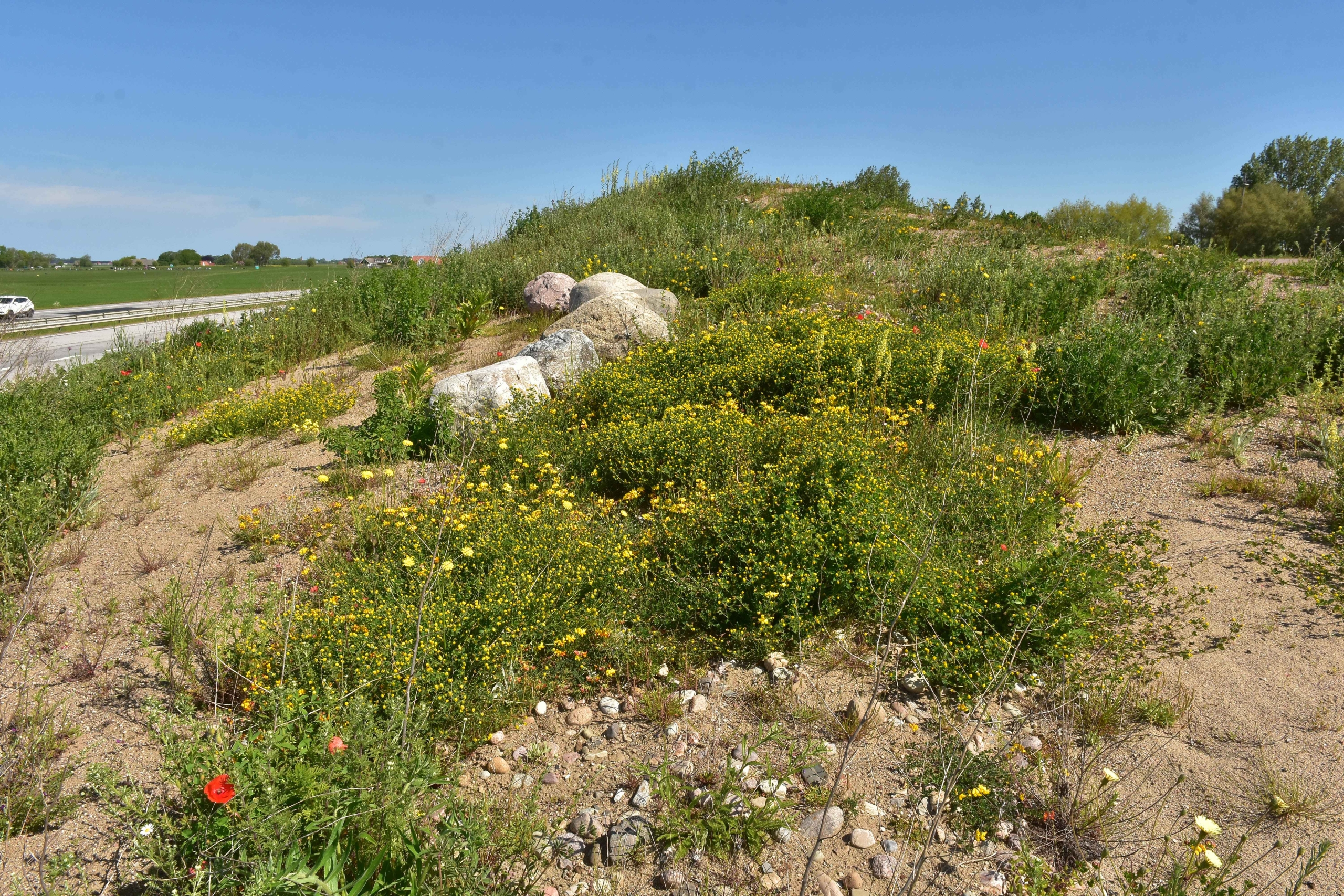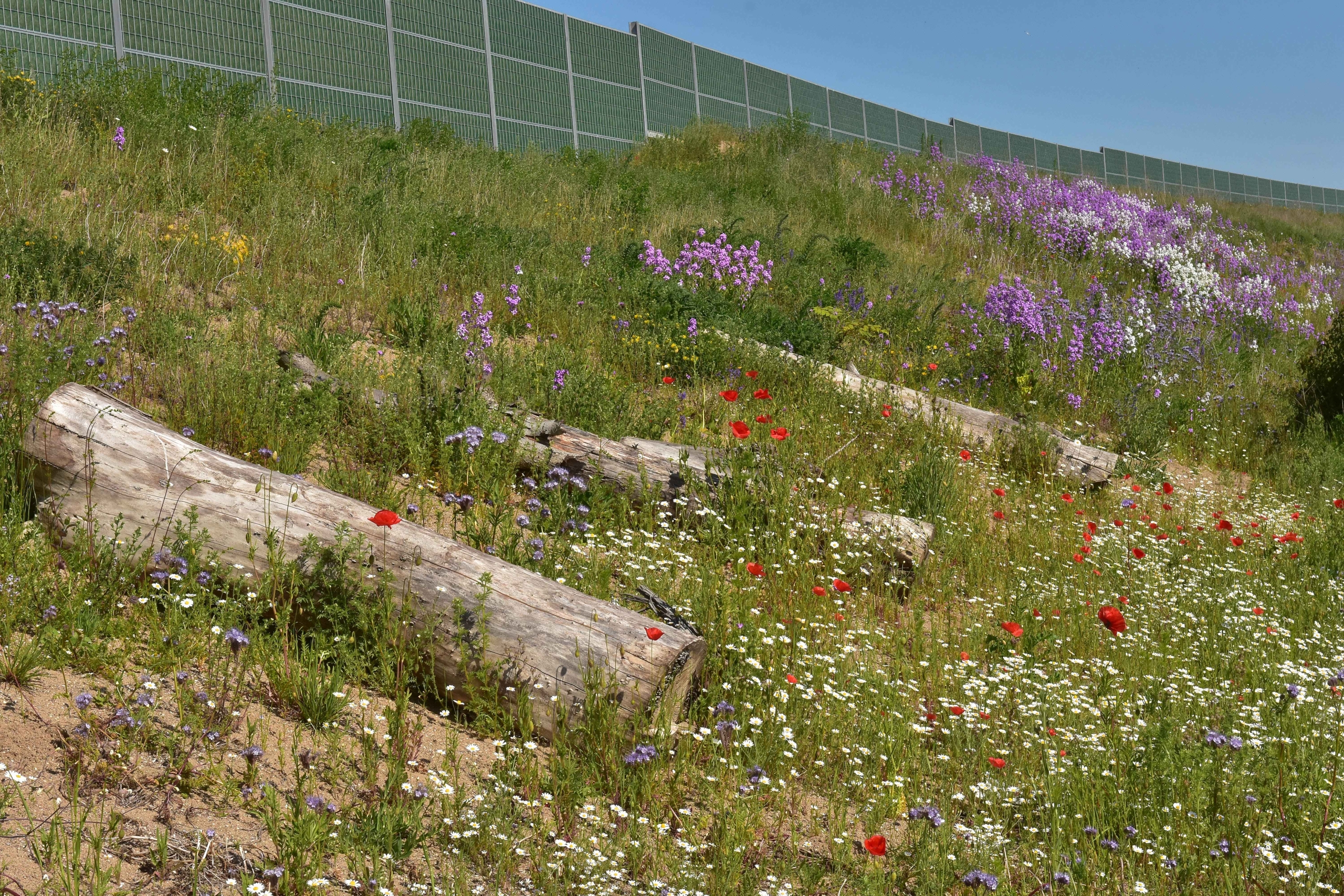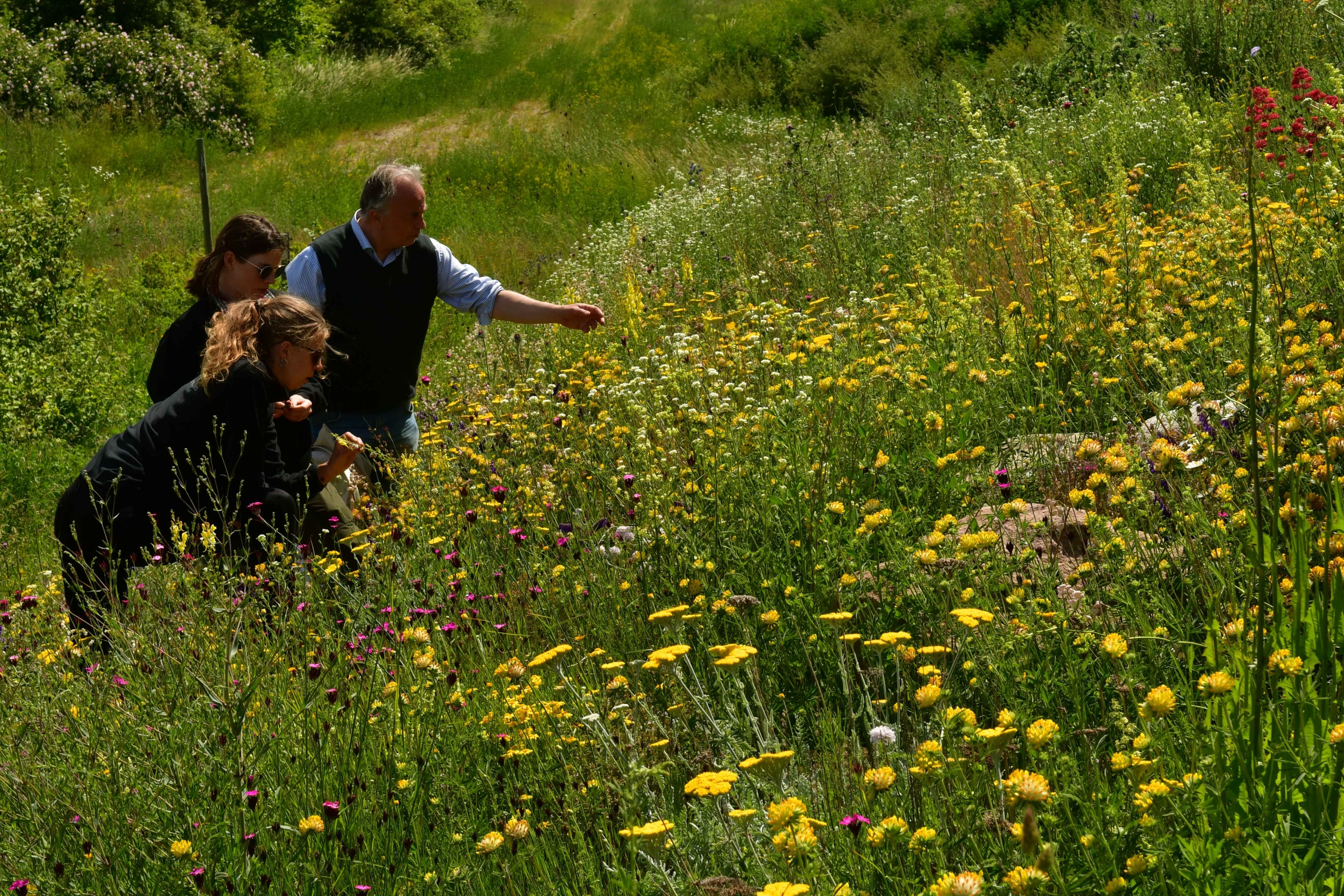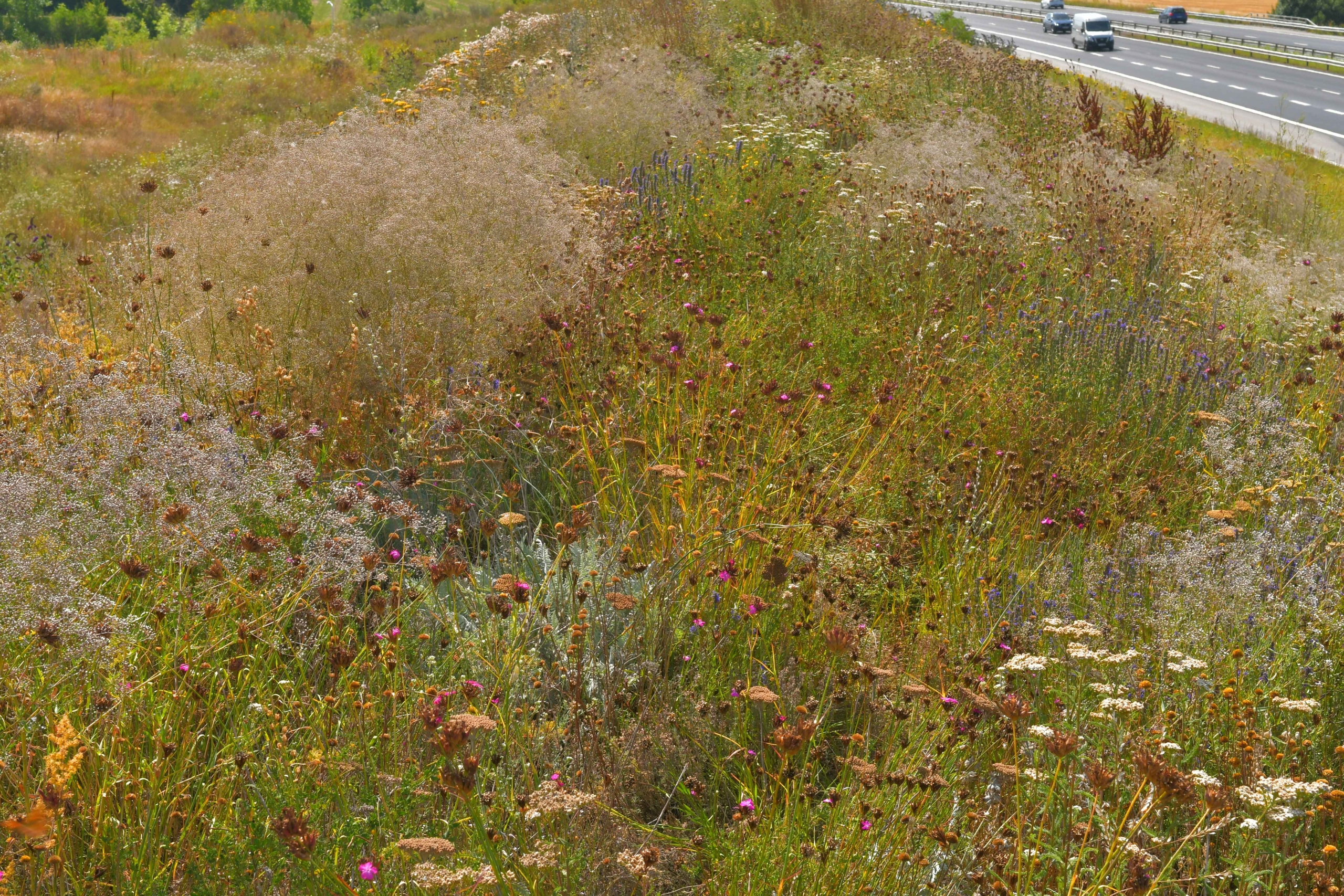11 500 square metres.
Planted during autumn 2018.
The aim was to create beautiful insect habitats with high biodiversity, on a rebuilt sound barrier along the motorway E6/E22.
The sound barrier was built using the available material from the already existing lower barrier on site, mixed with recycled material from local projects. The most nutritious soil was used as the bottom layer and the most sandy poor soil was pus at the top. The whole surface was covered with 10-20 centimetres of 0-8 mm glacial sand from a local gravel pit in Bösarp.
The barrier was divided into different categories. The most exposed areas, most beneficial for instects, were enhanced with more microbiotopes. They consist of smaller islands of different fractions of sand or pebbles, to attract a greater diversity of insects and plants. The plantlists were a collaboration between Klinta Trädgård and an ecologist, in order to include all important species. In the areas for insects, we placed stones to support for example lizards.
The rest of the areas were sown with different seed mixes, containing at least 30 different species per seed mix.
In total around 300 different species in 25 different seed mixes were sown. Every area got its unique mix, based on what conditions they had. A mix with more competitive species in the moist ditch, lush species on the sheltered east side, more heat favoured on the west side, mats of thyme on the windy crest, or special mixes for the different areas with sand.
Each mix contained annuals, flowering beautifully the first year, together with slower species that will dominate in the long run. The first five years the pioneer plants dominate. After that, a more long-term mix will develop, changing slowly. Rabbits and other disturbance will make sure the pioneers always have some places to seed.
To create more habitats, the area was amplified with small islands of trees and bushes. As solitaries on the west side and in larger groups on the east side.
MAINTENANCE
The optimal way of maintaining the area would have been burning, with a few years apart. But the site and the wall makes it difficult. The climate in Vellinge is windy and dry, which help the areas to stay open. The west side will remain open during many years, while the east side will grow together. The plant choices are adjusted accordingly.
